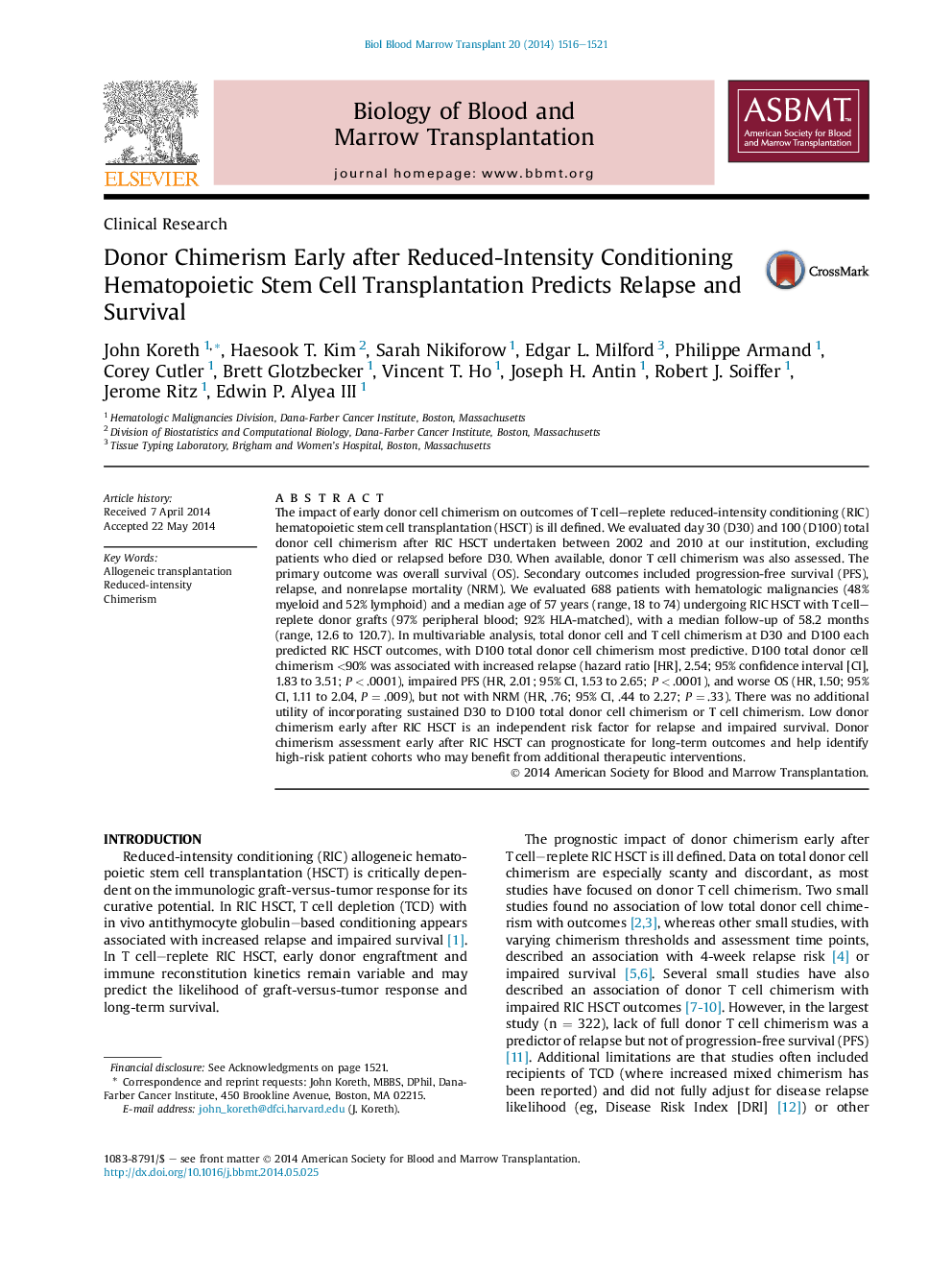| کد مقاله | کد نشریه | سال انتشار | مقاله انگلیسی | نسخه تمام متن |
|---|---|---|---|---|
| 2104140 | 1546275 | 2014 | 6 صفحه PDF | دانلود رایگان |
The impact of early donor cell chimerism on outcomes of T cell–replete reduced-intensity conditioning (RIC) hematopoietic stem cell transplantation (HSCT) is ill defined. We evaluated day 30 (D30) and 100 (D100) total donor cell chimerism after RIC HSCT undertaken between 2002 and 2010 at our institution, excluding patients who died or relapsed before D30. When available, donor T cell chimerism was also assessed. The primary outcome was overall survival (OS). Secondary outcomes included progression-free survival (PFS), relapse, and nonrelapse mortality (NRM). We evaluated 688 patients with hematologic malignancies (48% myeloid and 52% lymphoid) and a median age of 57 years (range, 18 to 74) undergoing RIC HSCT with T cell–replete donor grafts (97% peripheral blood; 92% HLA-matched), with a median follow-up of 58.2 months (range, 12.6 to 120.7). In multivariable analysis, total donor cell and T cell chimerism at D30 and D100 each predicted RIC HSCT outcomes, with D100 total donor cell chimerism most predictive. D100 total donor cell chimerism <90% was associated with increased relapse (hazard ratio [HR], 2.54; 95% confidence interval [CI], 1.83 to 3.51; P < .0001), impaired PFS (HR, 2.01; 95% CI, 1.53 to 2.65; P < .0001), and worse OS (HR, 1.50; 95% CI, 1.11 to 2.04, P = .009), but not with NRM (HR, .76; 95% CI, .44 to 2.27; P = .33). There was no additional utility of incorporating sustained D30 to D100 total donor cell chimerism or T cell chimerism. Low donor chimerism early after RIC HSCT is an independent risk factor for relapse and impaired survival. Donor chimerism assessment early after RIC HSCT can prognosticate for long-term outcomes and help identify high-risk patient cohorts who may benefit from additional therapeutic interventions.
Journal: - Volume 20, Issue 10, October 2014, Pages 1516–1521
